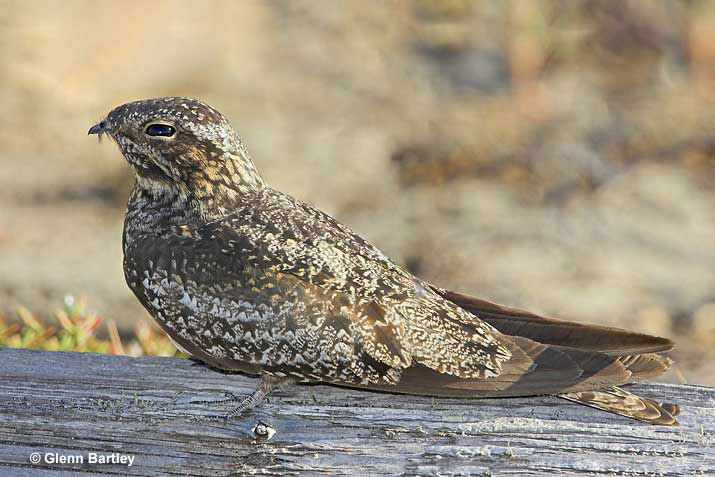The Common Nighthawk, with its slender build, long wings, and intricate camouflaging plumage, is known for the booming sound it produces while diving.
This bird feeds on up to 50 species of insects, capturing prey on the wing using its giant mouth. Common Nighthawks are found across almost all of the Americas, including rural, urban, and suburban areas, and inhabit various open and semi-open environments.
Though they are listed as least concern, their numbers are declining due to predation and human activities.
On this page
Identification
Common Nighthawks have a slender physique, long and pointed wings, medium-long tails and appear to have big heads due to their short neck and short bill. They grow 8.7-9.8 inches long, weigh between 1.9-3.5 ounces, and have a wingspan of 20-24 inches.
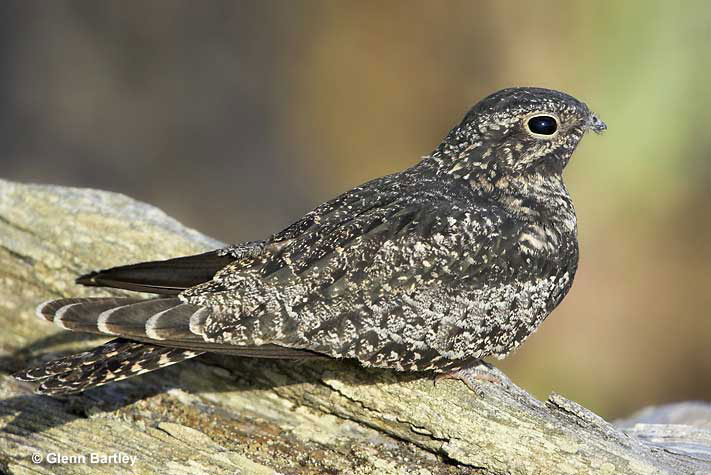
These medium-sized birds are a mix of dark grays, blacks, and browns and have complex and intricate patterns on their plumage that help them camouflage.
When you see a Common Nighthawk flying, you can recognize it by the white patch on the wings and a notched tail. Juvenile Common Nighthawks don’t look much different from adults.
Common Nighthawk’s call is a nasal peent or a variation of it that they give while flying. Females may hiss while defending the nest or cluck. You can also identify one by the distinct booming sound the male makes while diving.
What Do Nighhawks Eat?
Common Nighthawk’s diet consists of up to 50 different species of insects, primarily flying insects such as queen ants, wasps, beetles, caddisflies, moths, bugs, mayflies, flies, crickets, grasshoppers, and others. They may also consume small amounts of vegetation.
These birds are adept at hunting on the wing, using their giant mouths to capture prey while in flight. They typically hunt at dawn and dusk when flying insects are most active, but they can also be observed feeding during the day and night, especially on moonlit nights.
Nighthawks use their keen eyesight to locate prey, aided by a reflective structure in their eyes that enhances their night vision. They are known to converge on artificial light sources, which attract insects.
They may feed near the ground or water, as well as high in the sky, reaching altitudes of over 500 feet. Nighthawks have been reported to occasionally feed during the day in low light conditions, such as during storms or fog.
Common Nighthawks drink while in flight, skimming the surface of water sources such as lakes, streams, or water troughs with their bills.
Nesting and Eggs
These birds have unique breeding and nesting habits. Male Common Nighthawks begin the courtship ritual by performing an impressive flight display, flying high into the air and then diving steeply toward the ground, pulling up sharply a few meters before hitting it.
The air rushing through the male’s primaries produces a distinct booming noise. The male will also circle and hover high in the air, calling repeatedly before diving towards the female, landing near her, spreading his tail, rocking back and forth, and calling.
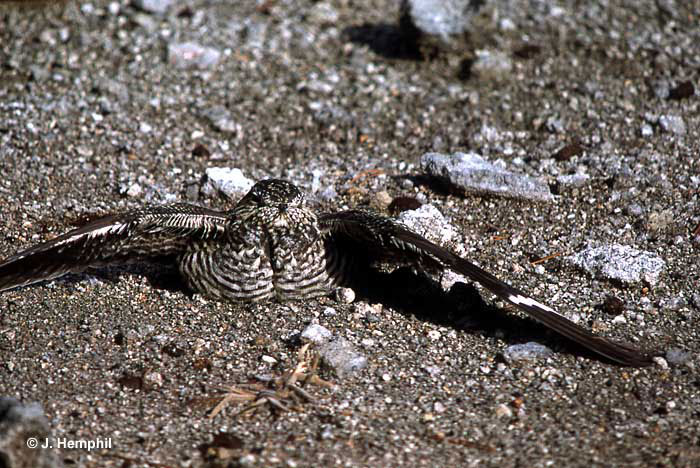
The female Common Nighthawk usually selects the nesting site, typically on unsheltered ground, such as gravel, beaches, rocky outcrops, and open forest floors, but may also be near logs, grass clumps, shrubs, debris, or boulders.
In urban areas, they nest on gravel roofs. Common Nighthawks nest on the ground without trying to bolster it beforehand. The eggs are laid directly on the ground.
Common Nighthawk’s eggs are creamy white to pale olive gray, heavily spotted with gray, black, or brown, and are about an inch wide and long. The female lays two eggs which she then incubates primarily alone for 16-20 days, leaving only in the evenings to feed herself.
When the offspring have hatched, both parents take care of them and feed them regurgitated insects. They stay in the nest for around 18 days, take their first flight in about 21-30 days, leave the nest, and gain independence at about 30 days.
Current Situation
Common Nighthawk’s range covers almost all of the Americas. They breed in North America and parts of Central America and cover long distances while migrating to South America for the winter.
Common Nighthawk habitats include rural, urban, and suburban areas. They inhabit various open and semi-open environments, including coastal dunes and beaches, woodland clearings, deserts and desert scrubs, grasslands, savannas, sagebrush plains, open forests, and areas altered by human activity such as burned or logged forests, farm fields, and cities.
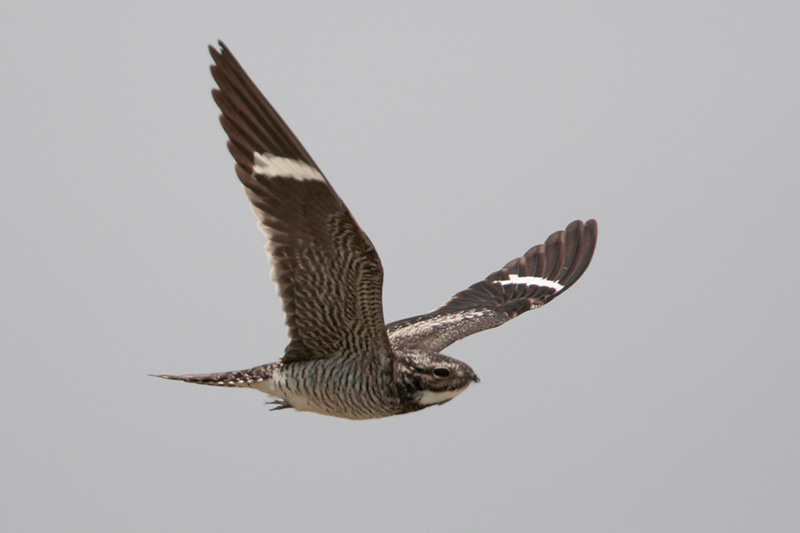
The critical factor in their habitat selection is most likely food availability.
These birds are listed as least concern in the IUCN Red List, and they have a rather large population. However, their numbers are declining due to predation and human activities, such as habitat loss and pesticide use, which reduces food availability.
Facts
- The Common Nighthawk is also known as a bullbat due to its bat-like flight. Interestingly, the name Nighthawk is a bit misleading since the bird is not related to hawks, only looks like one, and is active at dawn and dusk, not at night.
- There are many different nighthawks, but they look and behave fairly similarly. The Antillean Nighthawk and the Whip-poor-will were considered the same species as the Common Night Hawk until 1982 and the early 19th century, respectively. Common Nighthawk also has nine recognized subspecies.
- Common Nighthawks have one of the longest migration routes of all birds in North America, traveling up anywhere from 1,600-4,200 miles during migration.
- A group of Common Nighthawks is called a kettle.
- Nighthawks pretend to be wounded, making it seem like they have a broken wing and hopping away from the nest in an attempt to lure an intruder or a predator away from it.
Similar Species
Many species are similar to the Common Nighthawk, most of them other nightjars. We’ve introduced four of them and brought out how to distinguish between them.
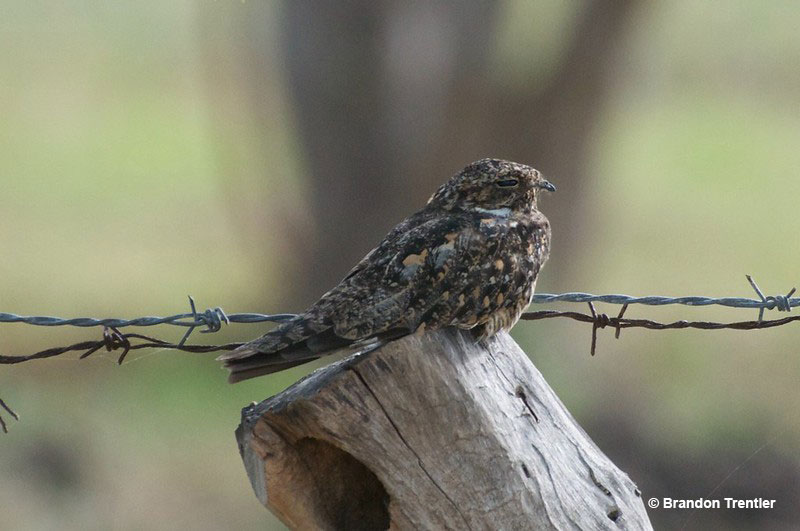
Lesser Nighthawk © Brandon Trentler
Lesser Nighthawk
The Lesser Nighthawk is nearly identical to Common Nighthawk. There are only two notable differences.
Lesser Nighthawks are slightly smaller, and the white bar on their wings is closer to the tip.
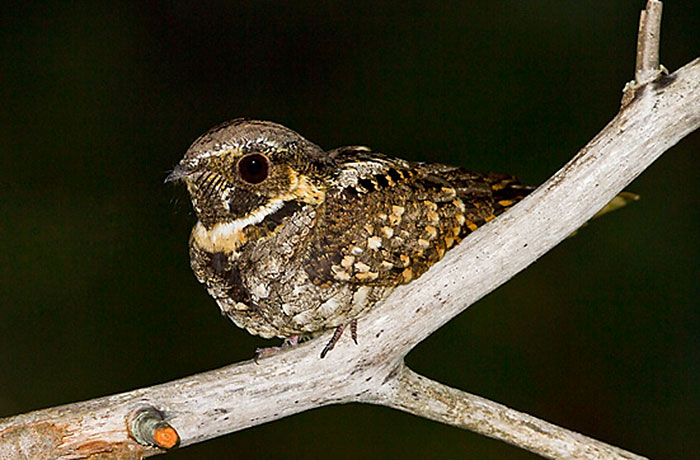
Eastern Whip-poor-will
Another nearly indistinguishable specimen, the Eastern Whip-poor-will can be distinguished from the Common Nighthawk by the fact that the former is active at night, while the latter at dawn or dusk, and that Whip-poor-wills don’t have a white bar on their wings.
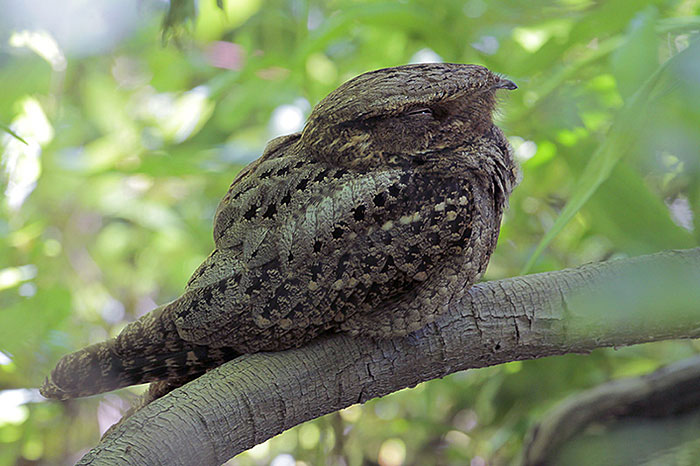
Chuck-will’s-widow
Similarly to Eastern Whip-poor-will, they don’t have the white bar on their wings and are more nocturnal.
They are slightly bigger and sport warmer tones, but other than that, they look very similar.
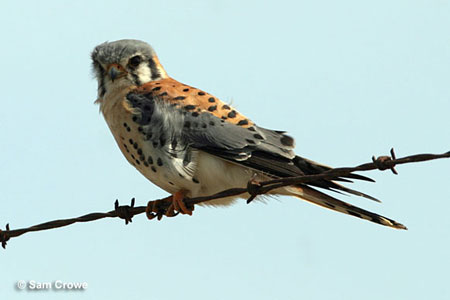
American Kestrel
These two species have a very similar shape in flight but other than that, it’s easy to tell them apart.
American Kestrels don’t have the notched tail, their flight is more direct, and they don’t have the camouflaging pattern and coloring the Common Nighthawk does.
Frequently Asked Questions
Why is it called a Nighthawk?
The term nighthawk was first used for the European Nightjar in the King James Bible. The name itself probably came from the bird’s similarity to a hawk and that they’re active at dark times, although not at night.
Are Common Nighthawks rare?
Common Nighthawks are widespread and fairly common, but their numbers are declining. They’re also tough to spot due to their camouflaging plumage.
Is a Common Nighthawk a hawk?
Contrary to its name, the Common Nighthawk is not a hawk but a nightjar.
Where do Common Nighthawks live?
Common Nighthawks live all over the Americas, preferring open to semi-open habitats in rural, urban, and suburban environments.
How big are Nighthawks?
The Common Nighthawk is about 8.7-9.8 inches long with a wingspan of 20-24 inches. Its size is similar to that of an American Kestrel, which places them somewhere between a Robin and a Crow.

